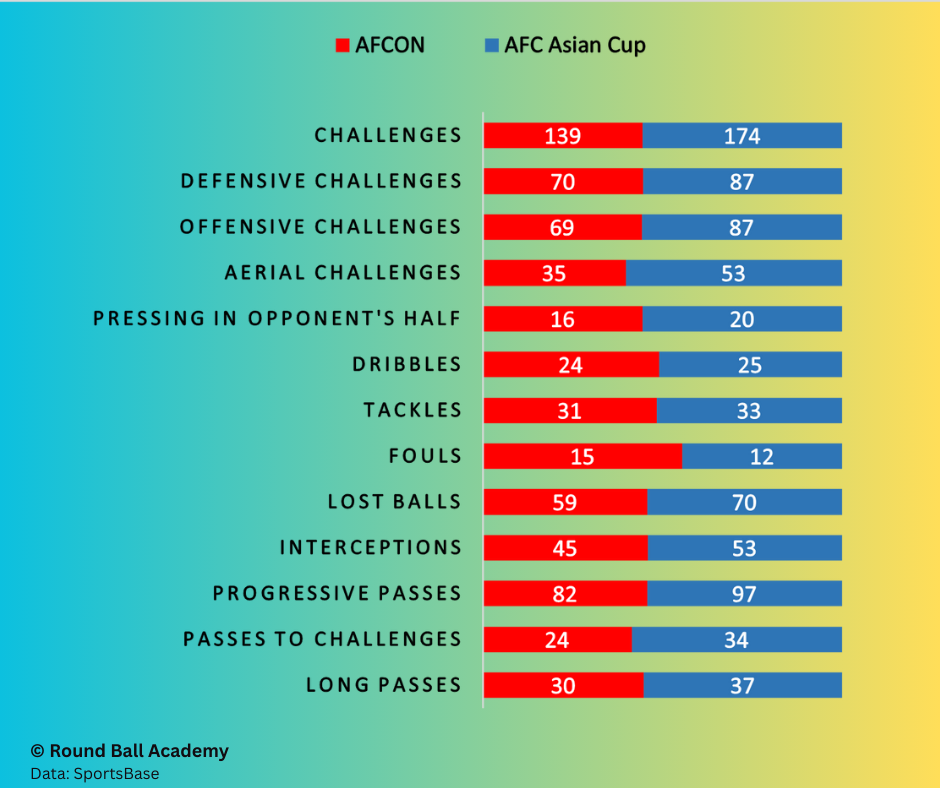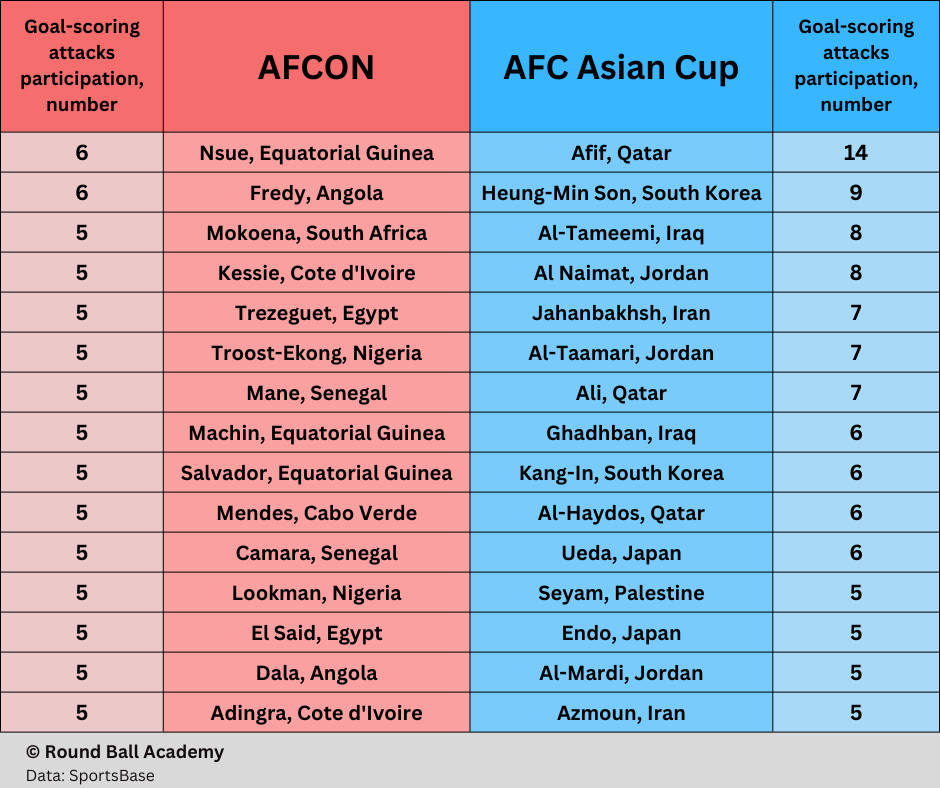Stats comparison of AFCON 2023 and AFC Asian Cup 2023
Posted on 14 February 2024
In January-February 2024, two continental national teams tournaments took place simultaneously. Both tournaments involved 24 teams each. Therefore, comparing the data from AFCON and AFC Asian Cup under similar conditions allows for reasonable conclusions about the similarities and differences in African and Asian football.
AFC Asian Cup 2023 was slightly more goal-scoring (5.5 goals per team compared to 4.9 at the AFCON), and also more goals were scored from outside the box (0.75 – 0.46). Overall, there were no significant differences in the types of goal-scoring plays and their durations. It is interesting to note that in Asia, teams often outplayed the opposition’s defence through the centre, scoring 1.42 goals per team using this direction. In Africa, successful combinations on the flanks prevailed (1 goal through the left and 1.17 through the right), whilst scoring through the centre was less common (0.92).
This tendency is even more interesting considering that the accuracy of crosses among the AFCON participants was lower (26% compared to 31%) with the same number of attempted crosses (12 per team per 90 minutes).
One of the noticeable differences in the style of play is the level of toughness. On average, a team at the AFCON committed 15 fouls per 90 minutes, whilst in the AFC Asian Cup, it was 12.
Matches at the AFC Asian Cup were played with a bigger number of transitions. Both in terms of ball losses (70 per team per match compared to 59) and ball recoveries (51 vs 43), the Asian tournament had higher rates. This can be explained by the more frequent attacking play through progressive passes and the more active pressing after losing possession.
Overall, the structure of Asian teams was more compact. In terms of all types of challenges, the tournament surpassed the AFCON. It is notable that in most parameters related to putting pressure on the opponent, AFC Asian Cup participants had higher scores. As for other key parameters, including shots, dribbles, or key passes, the tournaments had identical or similar rates.

Asian footballers were caught offside more often – the difference was 27%. Four AFC Asian Cup teams were caught offside 3 or more times per match, whilst in Africa, the highest value was 2.8 (by Namibia). The frequent offside situations are not only related to timely adjustments of defensive blocks but also to the teams’ desire to attack the space behind the defenders.
Regarding individual actions, it should be noted that Asian teams relied more on their leaders. Whilst only two players participated in more than 5 goal-scoring attacks at the AFCON (in fact, the maximum number of goal scoring attacks a single player was involved in was 6), there were 11 players who participated in 5+ goal-scoring attacks at the AFC Asian Cup (with the maximum of 14).

Interestingly, the two best AFCON players according to these stats represent teams that didn’t even reach the semifinals. On the other hand, the best player of the AFC Asian Cup, Akram Afif of the tournament-winning Qatar, was directly involved in all of his team’s goals. Almost all of his contributions were in the final action: 8 goals, including 5 penalties, and 3 assists.
Thus, at the AFCON, teams achieved success through interactions and the contributions of different players, whilst at the AFC Asian Cup, the final stages participants mainly relied on a limited set of players.